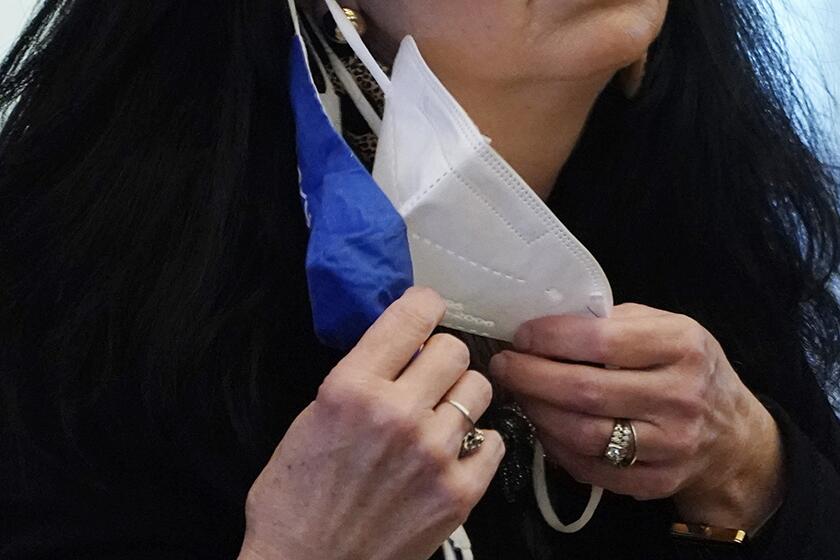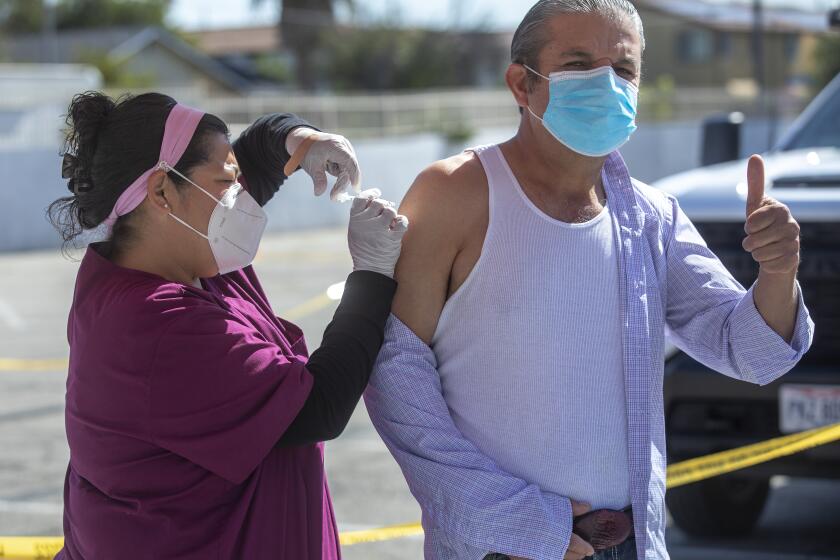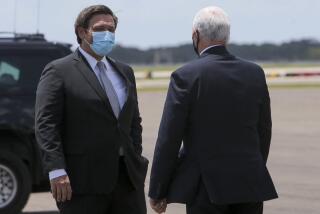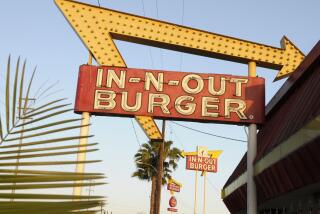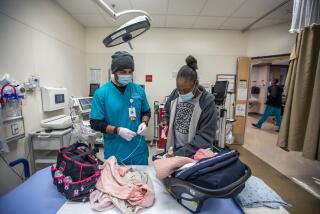CDC study: Restaurant dining bans and mask mandates make a difference in COVID-19 rates
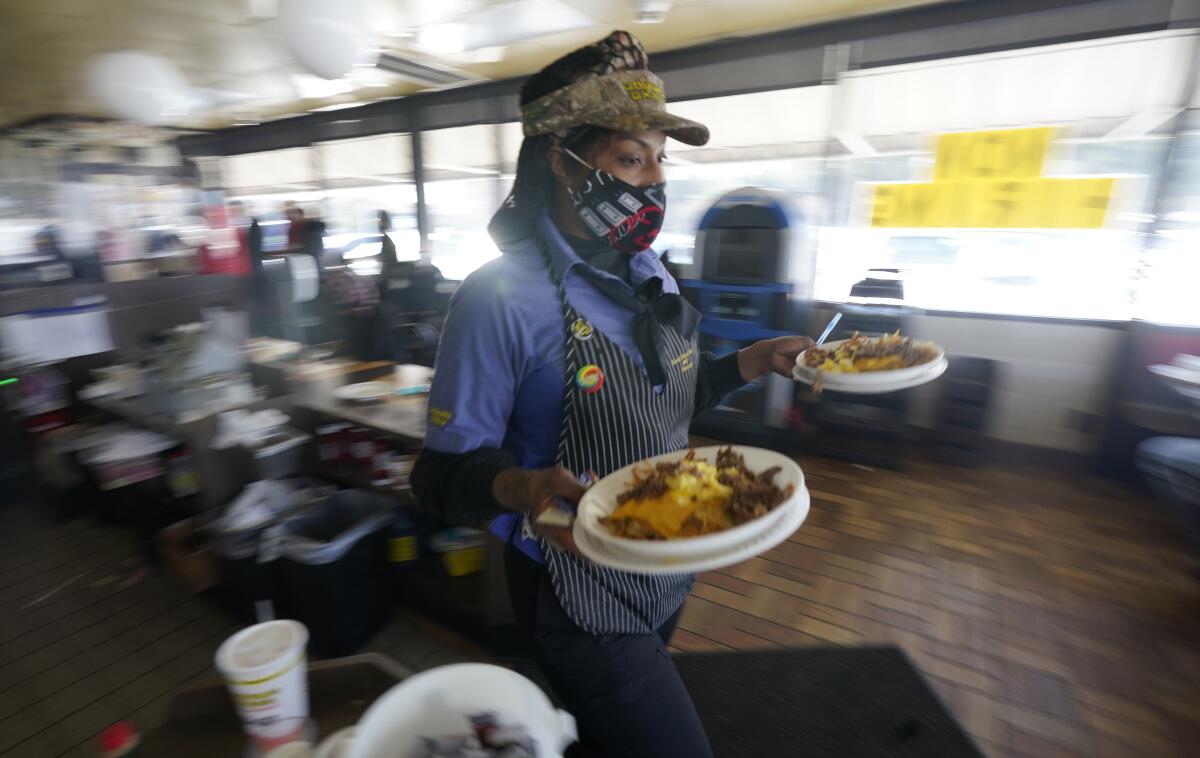
- Share via
In the fight against COVID-19, public health authorities have long urged people to mask up and avoid shared spaces like restaurants. Now, the Centers for Disease Control and Prevention has real-world evidence that these policies work.
By tracking changes in the case and death rates in counties across the United States, CDC researchers showed that these strategies are indeed crucial.
“Such efforts are increasingly important given the emergence of highly transmissible SARS-CoV-2 variants in the United States,” they wrote in a study published Friday in the agency’s Morbidity and Mortality Weekly Report.
Because the coronavirus spreads mostly by the inhalation of virus-laden droplets expelled by infected people, universal mask use can put a serious dent in transmission. Another way to reduce viral spread is to avoid what the researchers call “nonessential shared spaces,” especially indoor ones where ventilation may not be great and it might be difficult to maintain a distance of at least six feet. Restaurants add in more risk, since patrons remove their masks to eat.
These measures may seem logical, but how much difference do they actually make?
For better or worse, the United States provided scientists with a natural experiment to find out. Starting last April, 39 states and the District of Columbia began issuing mask mandates (some have since been lifted), according to the report. And in March and April 2020, 49 states and D.C. prohibited on-premises dining at restaurants — but by mid-June, all had lifted their restrictions.
These policy changes gave researchers the data they needed. They examined changes in case and death rates before and after the policies were implemented.
Mask mandates were included regardless of whether they applied to all places outside the home or just to retail businesses and restaurants. Restaurant closures were defined as bans on all operations or policies that limited service to takeout, curbside pickup or delivery.
At a public event Thursday, Gov. Gavin Newsom said that even though some states have decided to relax their mask rules, Californians should double down on face coverings.
The researchers compared the timing of mask mandates and restaurant closures in each county against changes in rates of new COVID-19 cases and deaths. The relationships were tracked for 100 days after a policy changed, with the analysis divided into five 20-day increments. They compared the growth rates in each of those increments to those in the 20-day period prior to a policy change.
The results revealed clear evidence that growth rates for new COVID-19 cases and deaths fell when mask mandates were put in place, and that both growth rates rose when restaurants were allowed to reopen (for either indoor or outdoor dining).
Between March 1 and Dec. 31, 2020, mask mandates were in place for some period of time in 2,313 of 3,142 counties in the U.S. The researchers found that the growth in daily case rates slowed by 0.5 percentage points in the first 20 days after a mandate was put in place.
The magnitude of the declines got bigger as time went on, to 1.1 percentage points in the second 20-day period, 1.5 percentage points in the third, 1.7 percentage points in the fourth and 1.8 percentage points in the final 20-day period.
In addition, the growth in COVID-19 death rates slowed by 0.7 percentage points in the first 20 days, followed by drops of 1.0, 1.4, 1.6 and 1.9 percentage points in the following 20-day periods.
Now to restaurant reopening: During the study period, states allowed restaurants to reopen for on-site dining (indoor or outdoor) in 3,076 counties (or nearly all of them). The researchers found no statistically significant changes in the growth rates of either daily cases or deaths in the first 40 days after restrictions were lifted.
But then things changed. Between 41 and 60 days after restaurants reopened, the growth rate of daily cases increased by 0.9 percentage points, followed by increases of 1.2 and 1.1 percentage points in the next two periods.
Americans are warming up to COVID-19 vaccines, with 19% saying they’ve already received at least one dose and 49% intending to do so when they get the chance.
Changes in death growth rates lagged, but when they did come in, the impact was significant: Allowing on-site dining was linked to increases of 2.2 and 3.0 percentage points in the 61-to-80 day and 81-to-100 day periods, respectively, after restrictions were lifted.
“Implementing mask mandates was associated with reduced SARS-CoV-2 transmission, whereas reopening restaurants for on-premises dining was associated with increased transmission,” the study authors concluded. “Policies that require universal mask use and restrict any on-premises restaurant dining are important components of a comprehensive strategy to reduce exposure to and transmission of SARS-CoV-2.”
While the data don’t prove cause and effect, they reveal a strong and compelling link between protective policies and improved coronavirus rates. The researchers acknowledged, however, that there are tradeoffs for these policies.
“Prohibiting on-premises restaurant dining might assist in limiting potential exposure to SARS-CoV-2; however, such orders might disrupt daily life and have an adverse impact on the economy and the food services industry,” they wrote.
